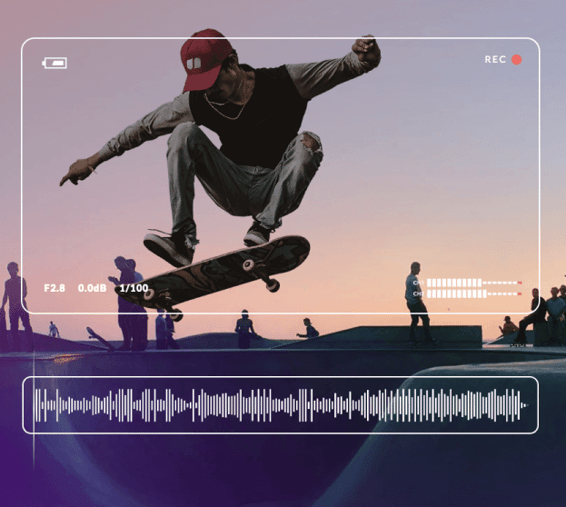Welcome to Outstanding
Royalty Free Medieval Music






Listen to Our Best Royalty Free Medieval Music
We know the right song can make or break your project. That’s why every track in our library is vetted by award-winning producers. Hear for yourself. We've curated a playlist with our best medieval music.
Looking for something different?
We got you. From classical to hip hop to indie, our audio library contains thousands of outstanding tracks. Use one of our 13 filters or check out other curated playlists to find what you need in minutes.
BROWSE THE FULL CATALOG
Dead Simple Licensing
Never worry about licensing again. With Soundstripe, your membership covers the cost for every song license. Just find the right track, download the file, and get a custom license. That’s it. No channel or media-specific fees, no recurring royalties, ever. Here’s more good news: you have unlimited licenses. Go ahead, download as many songs as you want.
Where To Find Royalty Free Medieval Music For Your Next Film Or Video
Music has deep roots in the culture of its creators.
So much so that it’s impossible to separate, let alone sever, the connection between jazz and New Orleans. Or country music and Nashville.
The cultural identity and history of these cities has been permanently impacted by music. And this isn’t an isolated phenomena.
The more we learn about the history of music, the more apparent it is that music leaves a lasting mark on those who write, produce, and listen to it — on a local and global scale.
Because of its cultural ties, music is a tool that filmmakers use to establish setting.
If a scene opens with a Big Band performing swing music, you probably assume that the story takes place in the 1930s or 40s in an urban environment.
If a scene opens with a troubadour playing a harp or lyra, you probably expect the story to take place in Renaissance or medieval times. Not, let’s say, in modern day New York.
You take your cues from the music and draw these conclusions based on your understanding of the music’s history.
In this post, we’re taking a look back at the medieval music of the 13th century and discussing why it's still valuable to creators centuries later.
If you’re interested in finding and licensing medieval music for a project, here’s a rundown of what you can expect to take away from the next few paragraphs:
- What the music scene was in the Middle Ages
- How filmmakers use (and modernize) medieval music
- How you can do the same with 10 easy-to-license songs
Music in the Medieval Period
The fall of the Roman Empire is what most scholars consider the start of the Middle Ages.
From that moment to the early 14th century (when the Renaissance period began), the Catholic Church became the most powerful and influential institution.
Naturally, because of the Church’s importance, religious and sacred values impacted every facet of medieval life — from art to architecture to music.
In the next two sections, we share how these values shaped the music of the medieval period.
1. Monophonic vs. Polyphonic Vocal Music
While instrumental music was certainly part of medieval culture, vocal music and chants were impactful on an entirely different level.
This is because vocal music had an important role in religious practices.
For the majority of the medieval period, this type of music was primarily monophonic — which is to say that a single melody was carried out by one or more singers.
The Gregorian Chant is a prime example of monophonic vocal music:
Toward the end of the medieval period, polyphonic vocal music became just as common as monophonic music, if not more so.
Instead of a single melody, the singers would follow pitch directions from neumes (i.e., sheet music) and carry out two or more melodies at the same time.
Here’s an example of polyphonic vocal music:
2. Medieval Instruments: Winds, Strings & Percussion
Though vocal music had a major role in medieval music culture, instrumental music left its mark on this period as well as the next: The Renaissance.
Vocal music was part of the period’s sacred music tradition while instrumental music was almost exclusively secular.
This type of music was produced with winds, strings, and percussion instruments like the ones listed below:
- Flutes
- Dulcimers
- Lyras
- Lutes
- Harps
As the medieval period transitioned into the Renaissance, vocal music was primarily polyphonic and instrumental music was becoming more and more experimental.
Instruments like the lute were still in use long after the medieval period ended.
How Filmmakers Use (And Modernize) Medieval Music
In this section, we’re taking a look at one example of how modern filmmakers use medieval-inspired music in practical (and experimental) ways.
“A Knight's Tale” (2001)
In this scene from “A Knight’s Tale” (2001), the filmmakers strategically introduce medieval music in a practical way: the moment when the characters begin to dance at the ball.
Though it’s common practice to layer non-diegetic music over a scene, this is an instance where music selection has to feel authentic for the time period.
Because the music is diegetic, it’s important that the audience believes that this music could have been played at an actual ball in the 13th century.
But, toward the end of this scene, the music takes a more modern turn and transitions into David Bowie’s “Golden Years.”
As a result, medieval and modern day music coalesce in a unique, unconventional way on screen.
Royalty Free Music For Your Next Medieval-Inspired Project
Like the filmmakers who produced “A Knight’s Tale,” you have every right to take creative liberties when creating the soundtrack for your next project.
Whether a film is set in the medieval period or the twenty-first century, it’s important to understand the cultural and historical context of the music you want to feature in your project.
As the saying goes, you need to know the rules before you can break them.
With a foundational understanding of a genre’s history, you’re more informed about what type of music you need to license.
You can ensure that the music comes across as authentic to viewers and makes sense for the time period.
To aid in your search for medieval music, here are 10 royalty free songs that have a Middle Ages feel:
- “La Guitarra Triste” by Cast Of Characters
- “Lake of Glass” by Josh Lim
- “Rue De Rivoli” by Moments
- “Siwa Oasis” by In This World
- “La Réjouissance” by Joshua Spacht
- “The Blacksmith” by Wicked Cinema
- “Realm of Men” by Cody Martin
- “Coat Of Arms” by Wicked Cinema
- “Serene Waters” by AEROPLANES
- “Awase” by Stefano Vita
If you need to license music but dread lengthy negotiations with copyright holders, you can bypass this stage of the process with Soundstripe.
To license any song from this list or Soundstripe’s music library, all you have to do is find the music you like, decide if you want a song stems version, and then click “License.”
By signing up for a monthly or annual plan, you get unlimited access to any song in the music library. Your use of the music is protected forever, no strings attached.


Have questions? Give us a call
855.224.0847
Soundstripe - Unlimited Music for Video
© 2017-2020 A Product of Soundstripe, Inc
Nashville TN



